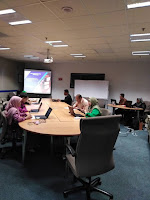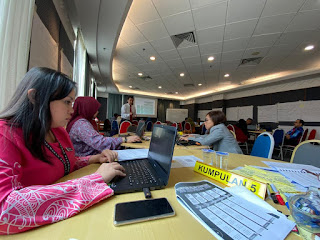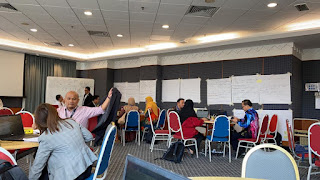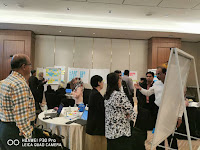THE ART OF THINKING CLEARLY
By Nur Syazana binti Azman
TITLE: The Art of Thinking Clearly
AUTHOR: Rolf Dobelli
PUBLISHER: Harper, 2013
SYNOPSIS:
In the introduction, the author explains that the book
began as his study notes of the works of great thinkers. While the author is
not a psychologist, behavioural economist or thinker himself, he has gathered
enough to compile a list of common cognitive biases or thinking errors that
hinder people from thinking clearly. Thus the final product is a list of 99
cognitive biases, with each concept or idea explained briefly in two to three
pages. The book is a helpful summary of the various cognitive biases we knowingly
or unknowingly practice in daily life, supported by interesting anecdotal
evidence and references to psychological experiments. Various fallacies in
logical thinking are explained in simple language, allowing readers to grasp
the general concept without needing to read many scientific illustrations. The
Art of Thinking Clearly also includes advice and tips that the author uses to
think rationally and reduce errors in one’s life. The author frequently credits
his friend Nassim Nicholas Taleb and his 2007 book titled “The Black Swan: The Impact
of the Highly Improbable”.
MAIN THRUST:
The book is basically a list of psychological fallacies,
each supported with relatable anecdotes, psychological experiments or even
evolutionary origins. Some of the biases which I personally found to be
interesting and worth delving deeper into are:
i.
The Sunk Cost Fallacy: When the costs incurred in the past are
factored into decision-making. Ideally, one should only weigh the future costs
and benefits in order to make rational decisions.
ii.
Social Loafing: When individual performance is less visible due to
working in teams, people tend to put in less effort. Responsibility is diffused
in a team, causing people to slack mentally and perform weaker compared to
working on the same task alone. This bias is commonly observed in bloated
systems like the civil service.
iii.
Confusion between Risk and Uncertainty: Risk means that the probabilities are known. Uncertainty
means that the probabilities are unknown. Informed decisions can be made by
calculating risks, but the same cannot be done with uncertainty.
iv.
Groupthink, the Calamity of Conformity: In groups, people tend to accept the majority
conclusion to avoid contradiction. This bias causes smart people in a group to
make reckless decisions, because all members align their opinion with the
supposed consensus.
v.
The Paradox of Choice: An excessive amount of options causes inner
paralysis and subsequently, poorer decisions. One can never be sure of making
the right choice. To overcome this, criteria must be set and followed.
OPINION ABOUT THE BOOK:
The format of the 99-chapter book requires it to explain
each cognitive bias succinctly, which may be unsatisfactory for those seeking
an in-depth explanation. The author tries to demonstrate these biases to a
certain extent, without delving into the underlying cognitive and behavioural
sciences. The book also lacks a central argument or idea but rather acts as a
guiding list for newcomers to the field of cognitive psychology. Having said
that, it is still useful for readers to identify these cognitive biases which
have influenced their decision-making every day. The book is easy to read due
to its relatable anecdotes and simple language, and becomes entertaining when
we recognise instances of falling prey to these biases ourselves.
RECOMMENDATION TO THE READER:
The book is a light read, suitable for anyone interested in
behavioural psychology. Due to the fact that the book explains cognitive biases
in a list rather than in a story format, it may be difficult for readers to
retain the book’s insights for long. My recommendation is for the reader to
write notes of chapters they find most relevant or interesting, then relate the
cognitive bias to their own life. In this way, the reader can consolidate the
knowledge and apply it in real life to think clearer and make more rational
decisions. Additionally, the book takes influences from other authors and works
which may give deeper nuances and more value to the reader. These other works
include “The Black Swan: The Impact of the Highly Improbable” by Nassim
Nicholas Taleb, “Thinking, Fast and Slow” by Daniel Kahneman,
and "Influence: The Psychology of Persuasion" by Robert Cialdini.















